Birdfinding.info ⇒ Locally common in its limited range on the main islands of Japan, including parks and greenways in metropolitan Tokyo. Elsewhere some of the more consistent locations include Lake Toyanogata in Niigata, the town of Karuizawa in Nagano Prefecture, and Izumi on Kyushu. Contrary to several sources, the Green Pheasant is not known to be established anywhere outside of Japan, despite several introduction attempts. (Cf. Common Pheasant, below.)
Green Pheasant
Phasianus versicolor
Endemic to Japan: Honshu, Kyushu, Shikoku, and several adjacent islets (e.g., Sadu, Yaku-shima, and Tanega-shima), where it is widespread in woodlands, open, and mixed habitats, including parks with lawns.
Introductions have been attempted in England, Hawaii, the Delmarva Peninsula, and some other locations, but no populations are known to be established outside of Japan. Most putative reports refer to dark morphs of Common Pheasant (some of which may include Green Pheasant ancestry). For a comparison of Green and dark-morph Common Pheasant plumages, see Cf. Common Pheasant, below.
Identification
Male is distinctive: dark-green body, violet head, and mostly pale-gray back, rump, and wings, coppery-brown scapulars, and long, thin tail feathers with a ladder-like pattern of short dark bars.
In breeding plumage, the male’s face is ornamented with large, bright-red wattles and dark-feathered “horns.”

Green Pheasant, male. (Shimohinata, Tochigi, Honshu, Japan; February 27, 2019.) © Adrian Ringin
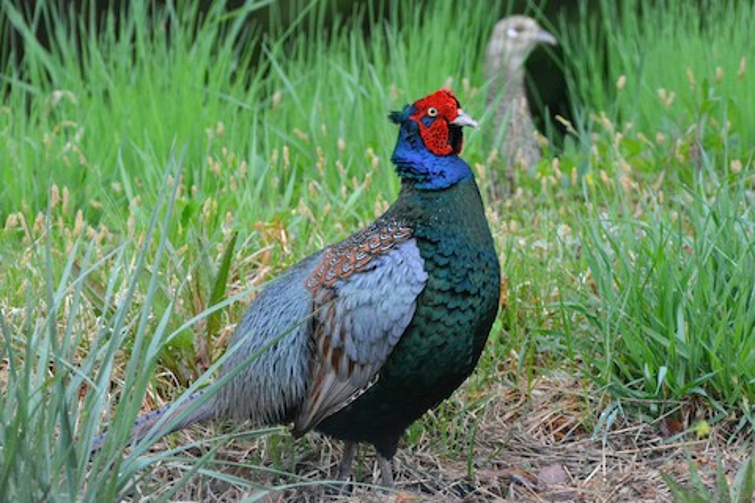
Green Pheasant, male. (Atera Gorge, Nagano, Honshu, Japan; May 5, 2018.) © Yuval Kariv

Green Pheasant, male. (Namaifurusato Park, Oyama, Tochigi, Honshu, Japan; July 28, 2019.) © Carlos Ibañez

Green Pheasant, male. (Nishikaigan Park, Niigata, Honshu, Japan; May 17, 2015.) © Brian Daniels

Green Pheasant, male. (Karuizawa, Nagano, Honshu, Japan; February 28, 2019.) © John Martin

Green Pheasant, male. (Karuizawa, Nagano, Honshu, Japan; February 28, 2019.) © John Martin

Green Pheasant, male. (Shindenjuku, Zama, Kanagawa, Honshu, Japan; April 6, 2019.) © www.aladdin.st
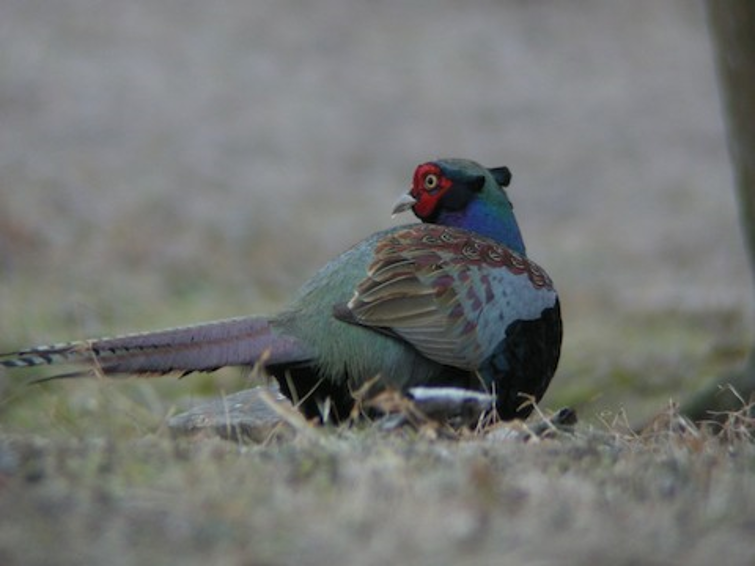
Green Pheasant, male. (Maebashi, Gunma, Honshu, Japan; January 18, 2010.) © Takayuki Uchida

Green Pheasant, male. (Kawarabuki, Ageo, Saitama, Honshu, Japan; August 1, 2019.) © Eric Haskell

Green Pheasant, male. (Ukishima Marsh, Kasumigaura, Inashiki, Ibaraki, Honshu, Japan; August 25, 2019.) © Gretchen Locy
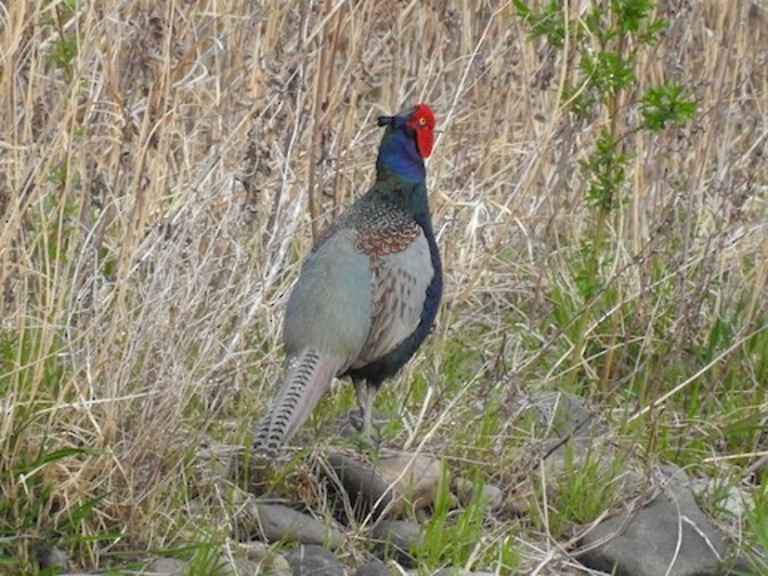
Green Pheasant, male. (Nakagawa Aquatic Park, Tochigi, Honshu, Japan; April 22, 2019.) © Adrian Ringin
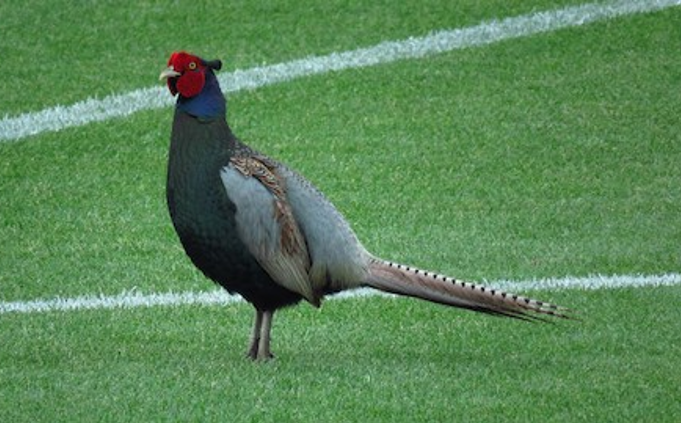
Green Pheasant, male. (Hiratsuka, Kanagawa, Honshu, Japan; June 18, 2017.) © Shane Dollman
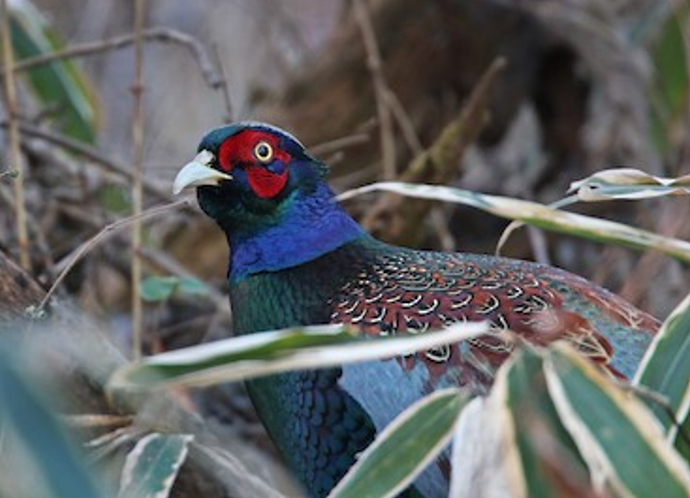
Green Pheasant, male. (Karuizawa, Nagano, Honshu, Japan; December 15, 2013.) © Ian Davies
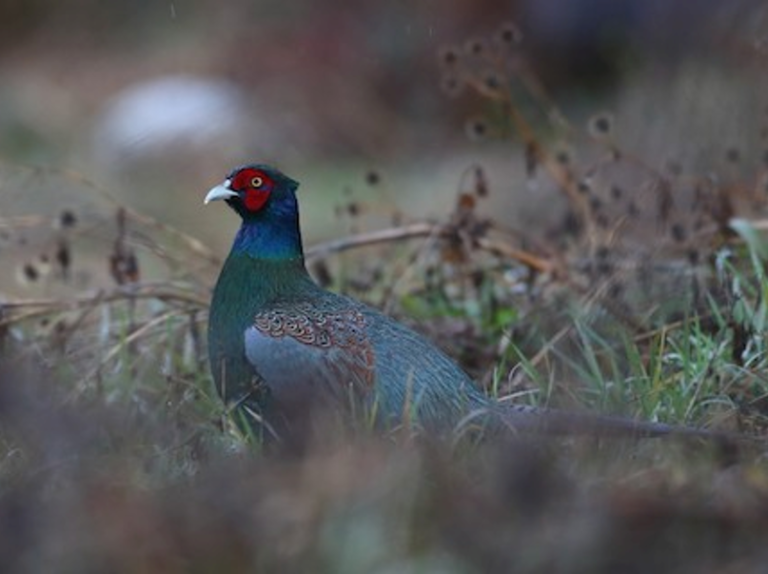
Green Pheasant, male. (Miyazaki, Kyushu, Japan; February 19, 2018.) © Carlos Bocos
Female is cryptically plumaged: tan or pale grayish-brown, and extensively marked with dark spots and scallops. The female’s tail is a shorter version of the male’s, with regularly-spaced, short dark bars.
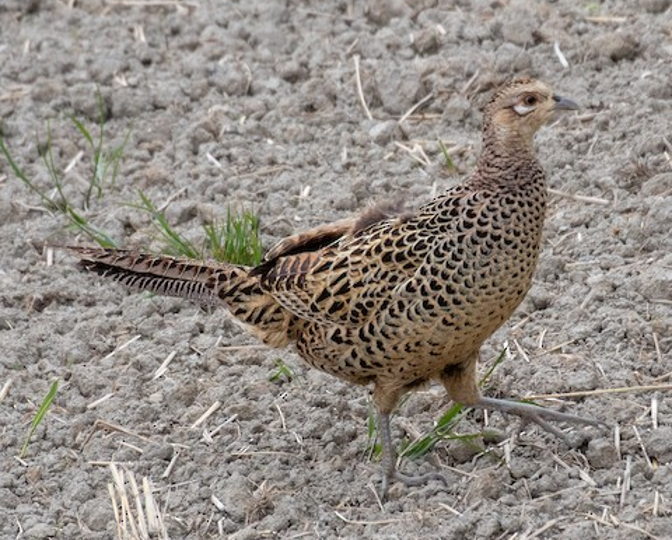
Green Pheasant, female. (Iwaki, Fukushima, Honshu, Japan; April 21, 2019.) © Kevin Moore
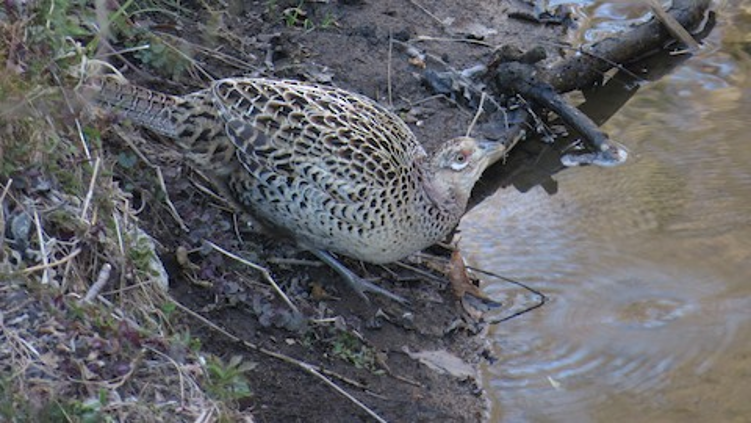
Green Pheasant, female. (Karuizawa, Nagano, Honshu, Japan; April 4, 2019.) © Oliver Pechenik
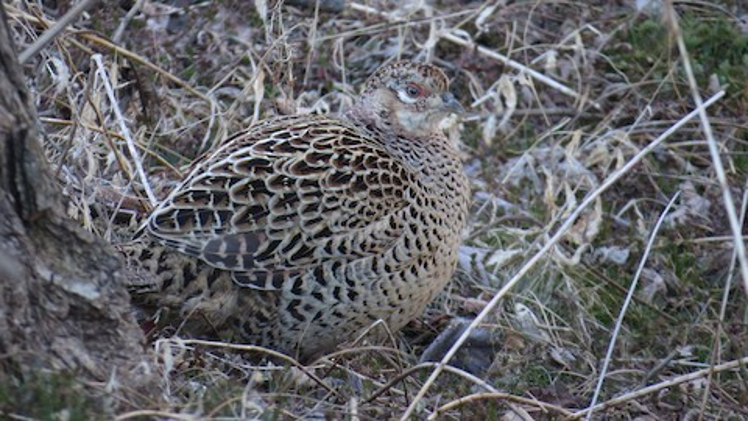
Green Pheasant, female. (Karuizawa, Nagano, Honshu, Japan; April 4, 2019.) © Oliver Pechenik
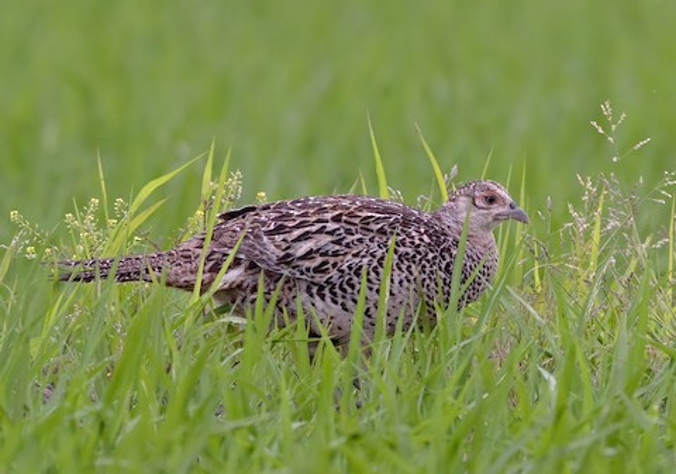
Green Pheasant, female. (Omigawa, Ibaraki, Honshu, Japan; June 7, 2017.) © Lars Petersson

Green Pheasant, female. (Shindame Reservoir, Mito, Honshu, Japan; February 3, 2020.) © Adrian Ringin
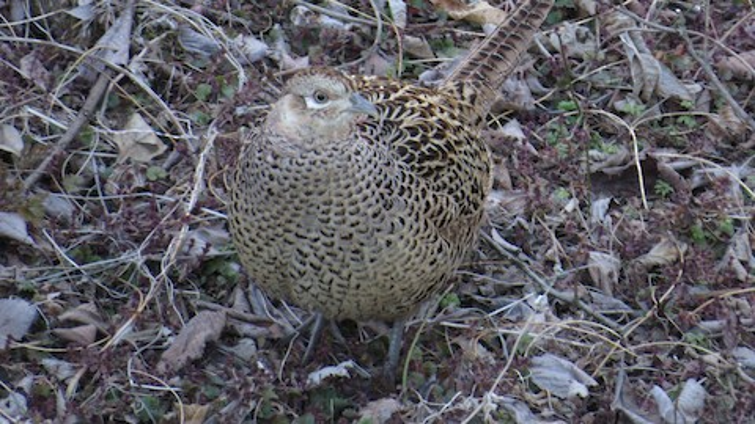
Green Pheasant, female. (Karuizawa, Nagano, Honshu, Japan; April 4, 2019.) © Oliver Pechenik

Green Pheasant, female. (Kurokura, Yamakita, Ashigarakami, Kanagawa, Honshu, Japan; January 7, 2019.) © belvedere04
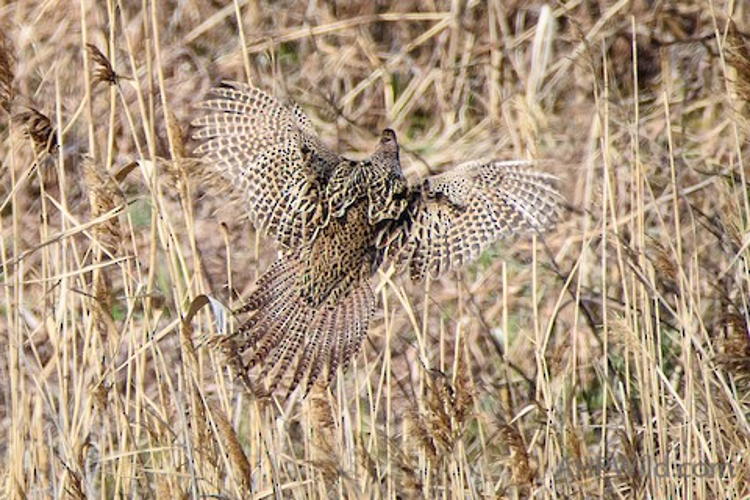
Green Pheasant, female. (Kumamoto, Kyushu, Japan; March 19, 2017.) © Adam Higgins
Voice. Male’s call is a harsh double-honk, similar to (and perhaps indistinguishable from) that of Common Pheasant:
Cf. Common Pheasant. The Green Pheasant is often regarded as a distinctive form of the Common Pheasant—which is exceptionally variable and includes some dark morphs that resemble the Green Pheasant.
Green and Common Pheasants are not known to occur together, so location is usually sufficient for identification. In cases where one has been introduced to an area occupied by the other, one remains while the other vanishes. This is the principal evidence on which they are now generally regarded as separate species.
There has been some confusion because some dark morph male Common Pheasants may have the same general appearance as a male Green Pheasant. Nevertheless, few if any dark morph Commons show exactly the same pattern as the male Green Pheasant. (See examples below of dark morph male Common Pheasants that share varying features in common with typical male Green Pheasant plumage.)

Green Pheasant, male showing diagnostic combination of features: dark-green body, violet head, and mostly pale-gray back, rump, and wings, coppery-brown scapulars. (Karuizawa, Nagano, Honshu, Japan; February 28, 2019.) © John Martin
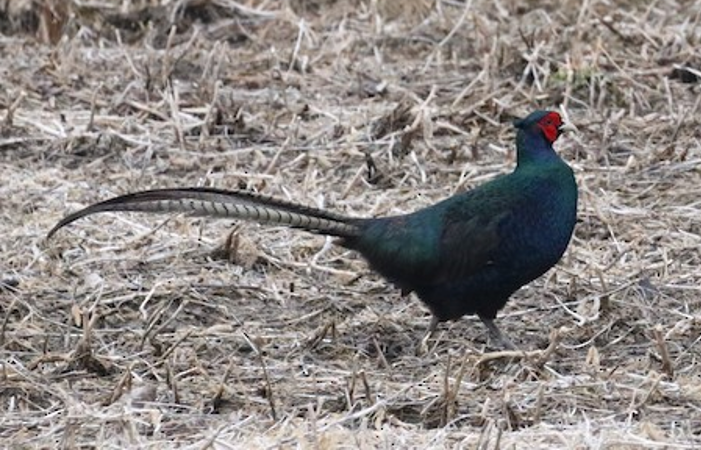
Common Pheasant, dark morph male with nearly uniform dark-green plumage. (Dover Plains, New York; February 1, 2020.) © Sean Carroll
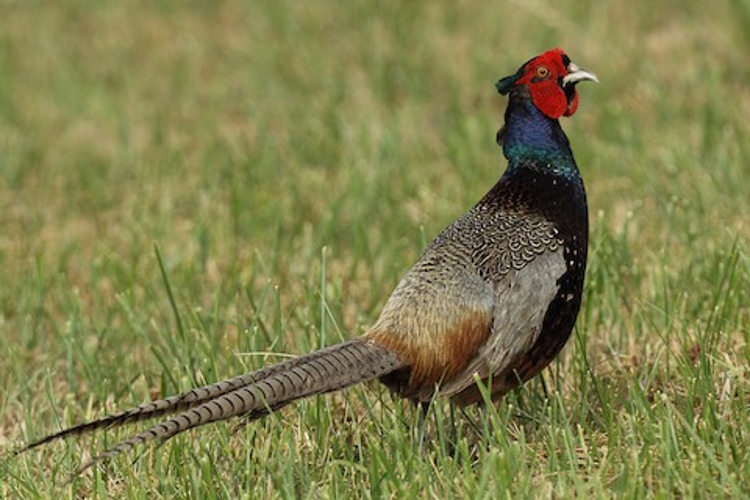
Common Pheasant, dark morph male with pattern similar to male Green Pheasant—but note rusty flanks and vent, and lack of coppery scapulars. (La Sologne, France; June 21, 2011.) © Frédéric Pelsy
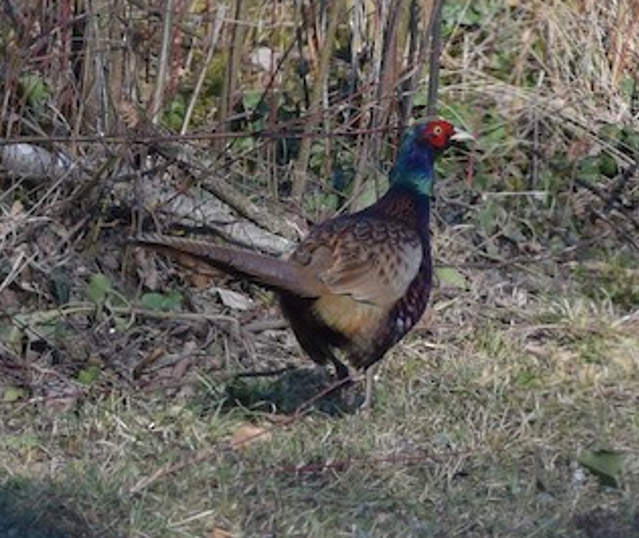
Common Pheasant, dark morph male with pattern similar to male Green Pheasant—but note general gray-brown upperparts, lacking distinct contrasting patches of Green. (Hard, Sankt Gallen, Switzerland; February 16, 2019.) © Lorenzo Vinciguerra

Common Pheasant, dark morph male with nearly uniform dark-green plumage. (Magescq, Aquitaine, France; April 20, 2019.) © Marc St. Onge

Common Pheasant, atypical dark morph male with mostly violet underparts and rusty-brown upperparts. (Hosmer Grove, Haleakala National Park, Maui, Hawaii; May 19, 2012.) © Robert Tizard
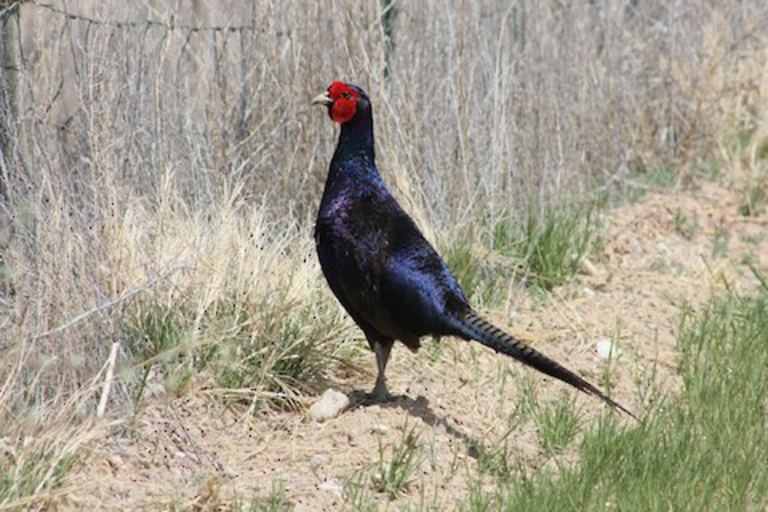
Common Pheasant, dark morph male with nearly uniform violet plumage. (Kevin Conway Wildlife Management Area, Utah; April 27, 2015.) © Tory Mathis
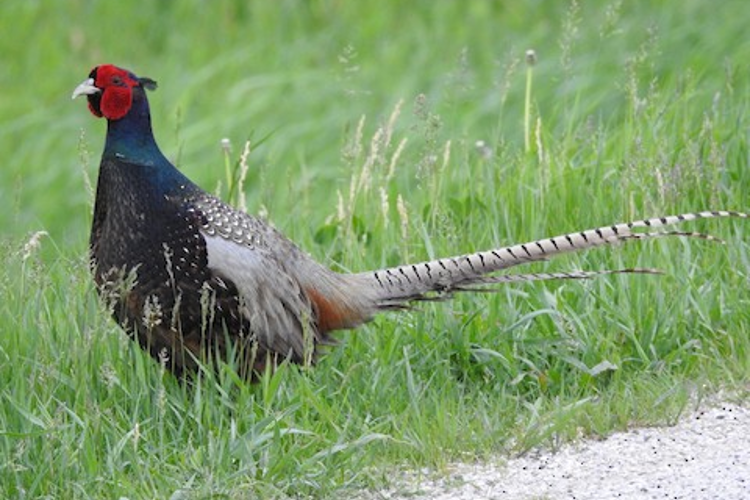
Common Pheasant, dark morph male with pattern similar to male Green Pheasant—but note rusty flanks and vent, and lack of coppery scapulars. (New Holstein, Wisconsin; June 3, 2018.) © Annie and Paul Mueller
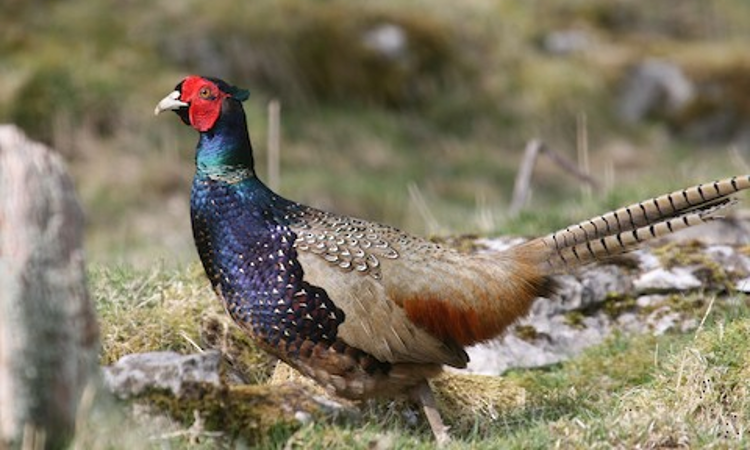
Common Pheasant, dark morph male with mostly violet underparts—note also the partial neck collar, rusty flanks and vent, and lack of coppery scapulars. (Ulverston, Lake District National Park, England; July 23, 2019.) © Peter Turner
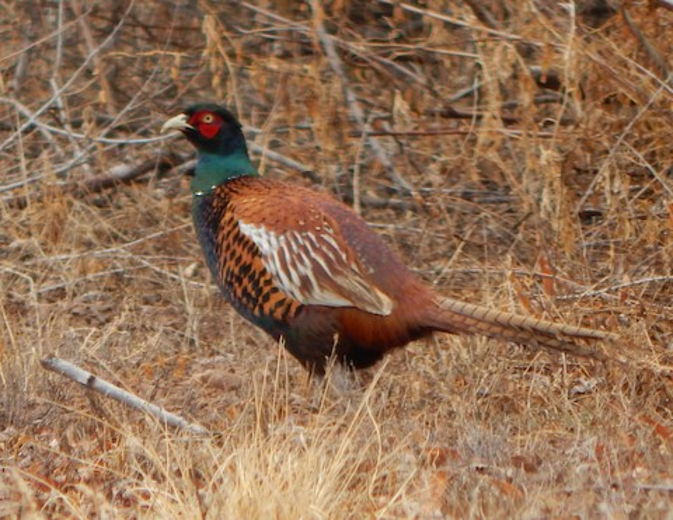
Common Pheasant, atypical dark morph male with largely dark-green underparts, rusty-brown upperparts, and white on the wings. (Bosque del Apache National Wildlife Refuge, New Mexico; February 10, 2020.) © Brian Taber
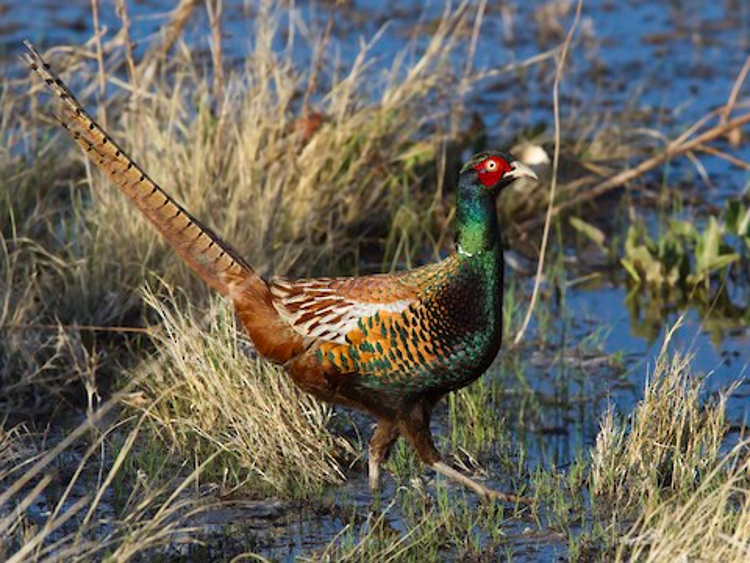
Common Pheasant, atypical dark morph male with largely dark-green underparts, rusty-brown upperparts, and white on the wings. (Bosque del Apache National Wildlife Refuge, New Mexico; April 3, 2018.) © Pierre Martin
Notes
Polytypic species consisting of four recognized subspecies.
Traditionally considered conspecific with Common Pheasant (P. colchicus), and hybridization occurs in captivity, but attempts to introduce Common Pheasants into the range of the Green Pheasant (mainly Honshu, Kyushu, and Shikoku) have failed, as have attempts to introduce Green Pheasant to areas occupied by Common Pheasant—which is now widely regarded as persuasive evidence that the two are separate species.
References
Brazil, M. 2009. Birds of East Asia. Princeton University Press, Princeton, N.J.
eBird. 2020. eBird: An online database of bird distribution and abundance. Cornell Lab of Ornithology, Ithaca, N.Y. http://www.ebird.org. (Accessed March 3, 2020.)
Madge, S., and P. McGowan. 2002. Pheasants, Partridges, and Grouse: A Guide to the Pheasants, Partridges, Quails, Grouse, Guineafowl, Buttonquails, and Sandgrouse of the World. Princeton University Press, Princeton, N.J.
McGowan, P.J.K., and G.M. Kirwan. 2020. Green Pheasant (Phasianus versicolor). In Handbook of the Birds of the World Alive (J. del Hoyo, A. Elliott, J. Sargatal, D.A. Christie, and E. de Juana, eds.). Lynx Edicions, Barcelona. https://www.hbw.com/node/53509. (Accessed March 2, 2020).
